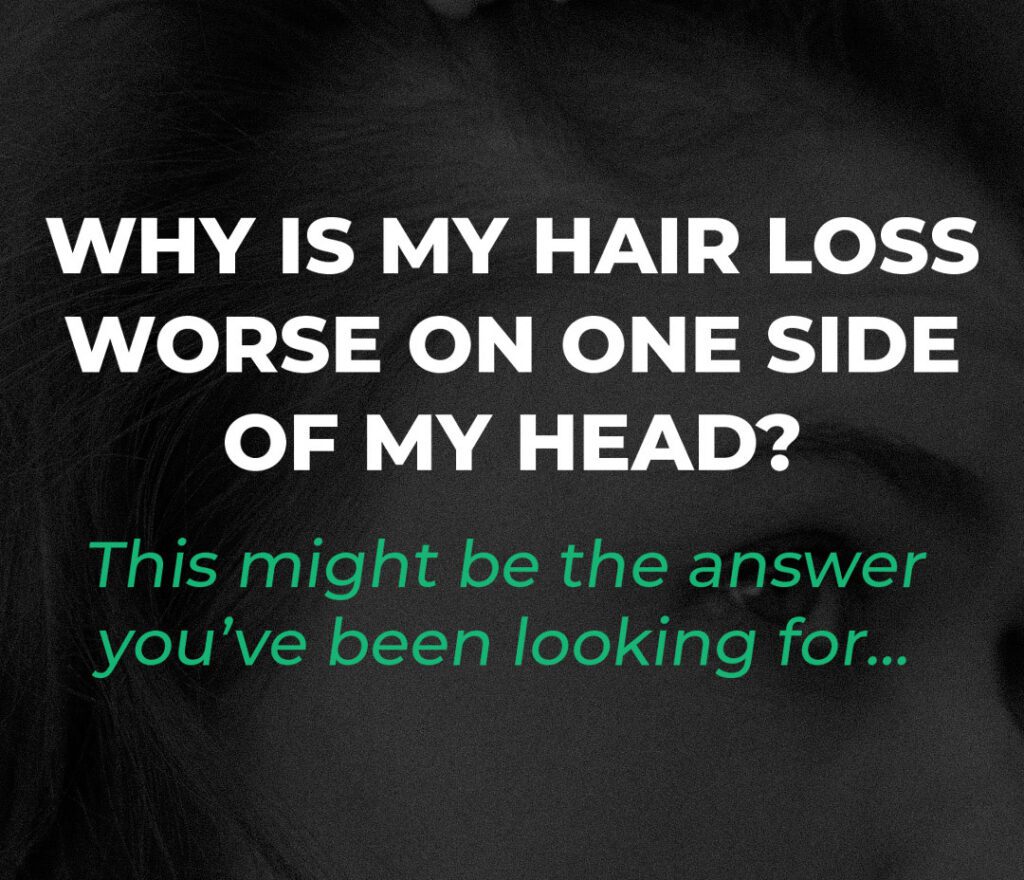Why Is My Hair Loss on One Side of My Head?
Noticing hair loss on one side of your head can be alarming and confusing. Unlike general thinning or receding hairlines, asymmetrical hair loss often raises more questions — and concerns. At MHR Clinic, we regularly see clients who are experiencing uneven hair thinning or bald patches and want answers. So, what causes one-sided hair loss, and how can it be treated?
Common Causes of Uneven Hair Loss
1. Sleeping Habits or Friction
If you tend to sleep on one side of your head more than the other, repeated friction against a pillow — especially without a silk or satin cover — can lead to traction and gradual thinning. This is particularly true if your hair is already fine or fragile.
2. Tight Hairstyles and Haircare Routines
Consistently wearing tight ponytails, braids, or buns to one side can put excess tension on that area of your scalp, resulting in traction alopecia. Even how you part or style your hair daily can create uneven stress and contribute to hair loss over time.
3. Scalp Conditions or Skin Issues
Skin conditions like psoriasis, dermatitis, or fungal infections can sometimes affect one side of the scalp more than the other, particularly if triggered by local irritation or scratching. These conditions can cause temporary or permanent hair loss if left untreated.
4. Injury or Scar Tissue
A cut, burn, or trauma to one side of your head can damage hair follicles and prevent regrowth. This type of hair loss is often localised and may require medical or surgical intervention depending on severity.
5. Underlying Medical Conditions
Occasionally, uneven hair loss may be linked to neurological issues, autoimmune disorders (like alopecia areata), or restricted blood flow to one part of the scalp. It’s important to consult a specialist if the hair loss is sudden, severe, or accompanied by other symptoms.
6. Male or Female Pattern Baldness
Although pattern baldness typically presents symmetrically, some individuals may initially experience more noticeable thinning on one side. Genetics, hormone levels, and environmental stressors can all influence how and where hair loss begins.
Diagnosis Is Key
The first step to resolving one-sided hair loss is a professional diagnosis. At MHR Clinic, we offer free consultations where our team of experts will assess your scalp, discuss your medical history, and recommend the best course of action — whether that’s a change in routine or a more advanced treatment plan.
Effective Treatments Available at MHR Clinic
We offer a wide range of clinically proven hair restoration treatments tailored to your specific type of hair loss:
-
FUE Hair Transplants: Ideal for restoring density in localised areas.
-
PRP Therapy: A non-surgical option that uses your body’s own healing properties to stimulate growth.
-
Laser Hair Therapy: Helps improve blood flow and revitalise follicles on the affected side.
-
Medication Programmes: Including finasteride and minoxidil, to target hormone-related hair loss and support regrowth.

